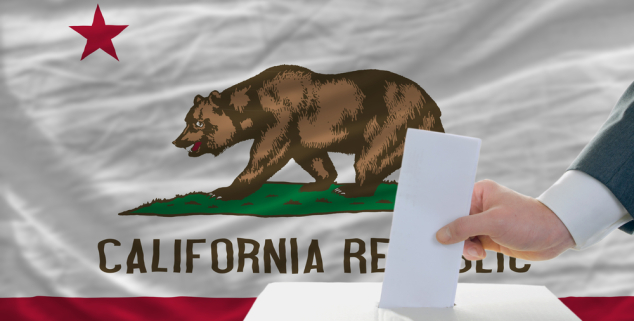Opinion
CA election data: People of color at disadvantage
 A Californian casts a ballot. (Photo: Vepar5 via Shutterstock)
A Californian casts a ballot. (Photo: Vepar5 via Shutterstock)All the votes from the June primary elections are finally counted. We now have the second highest number of votes—more than 8.5 million—ever cast in a California statewide primary.
These results are not a coincidence. In response to decreased turnout in recent elections, state legislators and election reform advocates made a concerted effort to boost voting through smart policies, including a 2012 law that made online voter registration available and a 2014 law that allows appropriately postmarked absentee ballots to be received three days after Election Day. Such policies, in addition to increased interest in this year’s presidential primaries, likely explain the increase in voting.
What we found is troubling. Significant racial gaps exist in nearly all forms of political participation.
While this is good news for our communities and for the state, we have a lot more work to do when it comes to ensuring that more Californians have a say in the political process. That’s because despite making up more than 60 percent of California’s population, people of color are largely shut out from influencing politics at various levels and shaping the policies that impact their lives.
Advancement Project worked with the School of Public Policy at UC Riverside to analyze 10 years of data on political participation in California. While most analyses of political participation focus only on voting, our report captures the broader landscape—from voting trends in presidential, midterm and local elections to other efforts, such as contacting public officials, participating in political campaigns and attending political meetings.
What we found is troubling. Significant racial gaps exist in nearly all forms of political participation. For example, voting rates in the last three presidential cycles averaged 68 percent among white adult citizens, but only 51 percent and 48 percent, respectively, among their Latino and Asian American counterparts. And the disparities grew in the last three midterm elections. Voting rates among whites were much higher than the rates among Latinos and Asian Americans.
When it comes to participation beyond voting, whites have the highest rates of engagement on every measure we examined. For example, contacting public officials is an important way for constituents to shape policy agendas. Only about 1 in 20 Asian Americans and Latinos, and fewer than 1 in 10 blacks, contacted their public official to express their opinions, compared to nearly 1 in 6 whites. Disparities are also evident in political campaigns, with only 1 in 10 Asian Americans and Latinos, and about 1 in 5 blacks reporting that they were involved, compared to almost 1 in 4 whites.
These disparities get even worse when we take into account the lower rates of citizenship among Latinos and Asian Americans. Even among citizens, however, important barriers remain among communities of color, including those associated with language, poverty, and lower rates of homeownership. While class inequality has received a lot of attention in recent years, our report raises the alarm about racial disparities that persist even after taking these factors into account.
We cannot allow such disparities to continue. To do so risks perpetuating the political disempowerment of people of color and laying the groundwork for future political and social unrest. A healthy democracy in our state is only possible if a wide and diverse range of voices informs policymaking. From community organizers to researchers and policymakers, we must act now to realize such a democracy. Here are some steps that we can take:
- Push for more robust data collection. For example, when collecting data on political and civic participation, regular surveys of California residents should ask questions that capture a wide array of political activities.
- Create education programs to boost civic knowledge and skills for children and adults of color, and tailor existing programs in ways that are culturally competent.
- Conduct extensive outreach and offer multiple opportunities to inform and mobilize people of color, especially those in low-income communities, on policy issues.
- Invest in innovative ways of participation—such as participatory budgeting and deliberation models—that go beyond public comment periods to include people’s voices in local governance.
Policymaking in Sacramento and in cities and counties across the state must reflect all the voices that now make up California. As more and more Californians feel their voices are heard and see the impact of their choices on their everyday lives, our democracy will be revitalized. Policymakers and civic leaders will get an accurate picture of what Californians need. New leadership will emerge, and government on all levels will be more responsive to all its constituents.
—
Ed’s Note: John Dobard, Ph.D., is manager of the Political Voice program at the Advancement Project, and co-author of “Unequal Voices” report. Karthick Ramakrishnan, Ph.D., is a professor at the School of Public Policy at UC Riverside and co-author of “Unequal Voices” report.
Want to see more stories like this? Sign up for The Roundup, the free daily newsletter about California politics from the editors of Capitol Weekly. Stay up to date on the news you need to know.
Sign up below, then look for a confirmation email in your inbox.

Leave a Reply